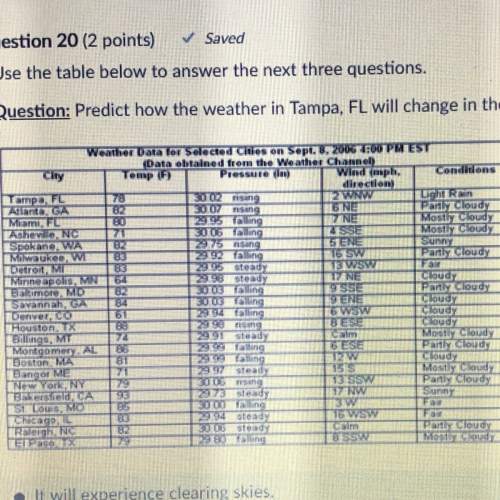
Physics, 03.02.2020 23:41 yogiiiii7131
The range of a projectile depends not only on v0 and θ but also on the value g of the free-fall acceleration, which varies from place to place. in 1936, jesse owens established a world's running broad jump record of 8.09 m at the olympic games at berlin (where g = 9.8128 m/s^2). assuming the same values of v0 and θ, by how much would his record have differed if he had competed instead in 1956 at melbourne (where g = 9.7999 m/s2)?

Answers: 3


Other questions on the subject: Physics

Physics, 21.06.2019 23:00, hunterdylan01
Acoal-fired plant generates 600 mw of electric power. the plant uses 4.8 x 10^6 kg of coal each day, and the heat of combustion of coal is 3.3x 10^7 j/kg. the steam that drives the turbines is at a temperature of 300° c, and the exhaust water is at 37° c. (a) what is the overall efficiency of the plant for generating electric power? (b) how much thermal energy is exhausted each day? (c) what is the change in entropy of the universe for this heat engine? (d) using the same heat reservoirs, what is the maximum possible (carnot) efficiency for a heat engine?
Answers: 1

Physics, 22.06.2019 07:00, lilpeepxliltracy
Aball has an initial velocity of 3 m/s. if there is no friction, what is the highest it could roll?
Answers: 1

Physics, 22.06.2019 12:10, malikbryant2002
Consider a one meter long horizontal pipe with a constant 100 cm^2 cross sectional area. water flows rightward into the pipe at x = 0 with flow velocity 02m/sec at every point within the pipe intake area. at x=1, the rightward flow rate is 0.192 m/sec. assume the water is a conserved quantity in the pipe, so there must be a leak (a sink) somewhere in the pipe. 1. compute net volumetric flow of the source if the system to be in equilibrium. 2. now assume the pipe in the problem has no leaks. compute the net volumetric rate of change for the system.
Answers: 3

Physics, 22.06.2019 19:30, u8p4
Water is siphoned from a large tank and discharges into the atmosphere through a 50-mm diameter tube. the end of the tube is b = 2.6 m below the tank bottom which is a = 6.7 m deep, and viscous effects are negligible. determine the maximum height h over which the water can be siphoned without cavitation occurring. atmospheric pressure is 101.4 kpa, and the water vapor pressure is 1.79 kpa (absolute). report your answer in meters to two decimal places.
Answers: 1
You know the right answer?
The range of a projectile depends not only on v0 and θ but also on the value g of the free-fall acce...
Questions in other subjects:




Mathematics, 16.03.2020 22:39





English, 16.03.2020 22:39

Social Studies, 16.03.2020 22:39




